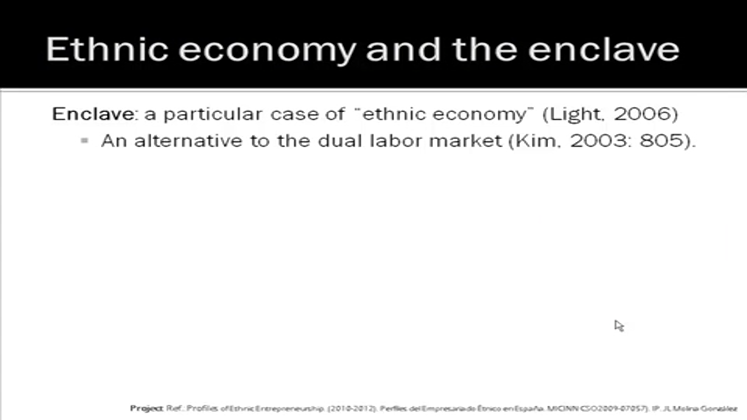Conquering Sunshades
Indian enclaves, Resilience and Local Commercial Conflict at the Catalan Coast
Mainstream theory on ethnic enclaves was initially developed in the United States from data collected from specific minorities and the reevaluation of previous theories (middleman minority theory and market labor segmentation theory). However, in Europe (and particularly in Spain) some authors deny the existence of ethnic enclaves due to legal constraints, the relatively short time of the migrant settlements and the relatively small scale of the entrepreneurial communities.
In less than a decade, however, the Indian community has massively settled and expanded their business in different tourist localities thorough the Gironde coast (Catalonia, Spain). Their strategy and characteristics respond to the definition of ethnic enclave. On the other hand, both Indian and local shopkeepers increasingly struggle to attract clients and maintain their income levels, suggesting a latent conflict that might readdress theoretical interpretations regarding assimilation and integration, social mobility, internal inequality and spatial concentration.
Hugo Valenzuela García holds a PhD in Social and Cultural Anthropology by the Universidad Autònoma de Barcelona. Currently, he is a lecturer there in the Department of Social and Cultural Anthropology (UAB).
Panel II – Labour Market(s) and Migration - October 14th, 2011
The Resilience of People in Motion
-
54498 Hits
-
|
-
2 Votes
-
|
-
16 Beiträge
Processes of immigration, transmigration, and remigration in the wider Europe today
Europe is a continent shaped by migration. Every year millions of people are migrating into the European Union. Others are emigrating from EU member countries. Many are leaving their homes and are trying to integrate into the host country, while others circulate between their home country and their “new home”, leave the country of entry, returning back to their “country of origin”, or they even migrate on to third countries.
Migration is a complex process with constraints and opportunities. Its flows have created different patterns, regimes and even cultures of migration. It involves voluntary and involuntary aspects, economic and non-economic issues, constructions and reconstructions between physical and symbolic spaces. This stipulates also new ways of theorizing and researching in the field.
Strategies of Survival, Strategies of Resistence
Migrants and migratory groups adopt as well as resist to challenges and expectations by the mobility itself or the receiving society. They perform resilient and innovative strategies of survival.
They are resilient by maintaining their culture(s), system(s) of belief, traditions, way of life etc. Yet, they are innovative being open for change, being transformers, innovators, entrepreneurs themselves. Therefore, adoption, change and/or innovation vs. resistance, continuity and/or resilience have to be seen as part of the migratory agency. The migrants’ culture of resilience, meaning the maintenance of core elements of their livelihood, has to be conceptualized in an ever changing world challenging the integrity and cohesion of any, but especially migratory groups.
The Conference
The aim of the conference is to discuss new theoretical approaches, methodologies and empirical research results on immigration, transmigration and re-migration topics. It focusses on changing European migration regimes and discourses since the fall of the iron curtain until today.
Contact
Prof. Michael Schönhuth
University of Trier
Universitätsring 15
D-54286 Trier
+49-(0)6 51-201-27 10 (Office)
http://transmigration.eu/
Zu
The Resilience of People in Motion






